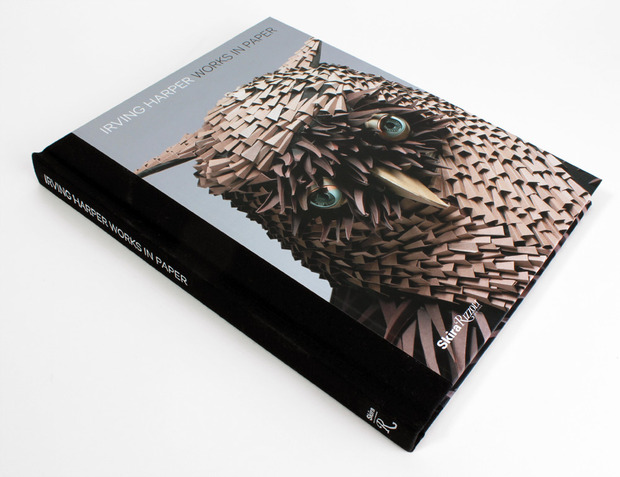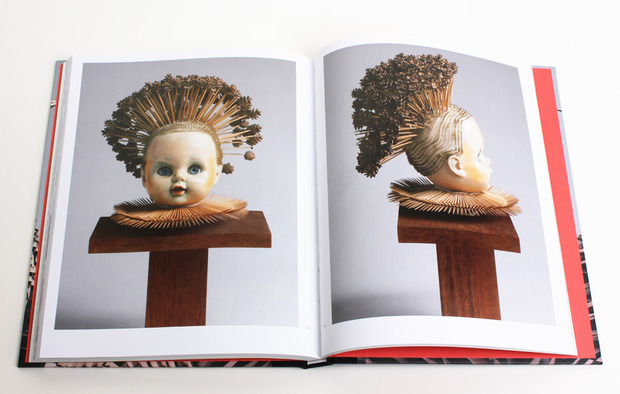Irving Harper: Works in Paper
Exquisite curiosities from a little known design legend revealed to the world

A brilliant new release from Rizzoli, “Irving Harper: Works in Paper” celebrates the private work of one of America’s great mid-century design minds. Irving Harper is mostly known to design insiders as the man-behind-the-man, working alongside Gilbert Rohde, Raymond Loewy and George Nelson during some of the celebrity designer’s most significant years, where he created graphics (including Herman Miller’s well known logo), textiles, furniture, clocks and more. Few are aware of his significant legacy, epitomized by the “Marshmallow Sofa” (1956) and “Ball Clock” (1949). He left George Nelson Associates in 1963 to start his own firm, Harper+George, with Philip George. Ironically, what may be his most incredible work never made it in front of public eyes. For many years, Harper has worked on paper sculptures as a private hobby, erecting intricate and delightful figures that sprawl throughout his suburban Rye, New York home.
Michael Maharam of Maharam textiles formed an unlikely friendship with the aging designer, convincing him to have his designs reissued for the company’s textiles, and with each visit he became more and more impressed with the variety, volume and artistry in Harper’s paper works. Convincing the designer that they should be shared, Maharam put the wheels in motion on the project that would become “Works in Paper.” We asked Michael to shed some light on the experience.

“Irving claims to have had a great deal of nervous energy and to be constantly fidgety, and this was his sport, his relaxation,” explains Maharam. The various figures and tableaux are evidence of a mind restless with creativity and hands brimming with talent. Maharam admits that Irving was “perhaps not the charismatic salesman Nelson was….every successful design entity needs a front man as well as a dreamer…sometimes, one and the same, and sometimes not.” Aside from the technical master and experimentation with the medium, the collection is vital in appreciating Harper’s too often overlooked talent and his contribution to design over the course of his career.
We asked Michael Maharam why he felt compelled to celebrate Harper’s paper sculptures. He says, “Largely because we saw them as an untended treasure with no likely future custodian and a highly uncertain future, which is still unclear. Hopefully this book will bring Irving and this work to the attention of institutions which may have interest.”
This book fulfills on many levels—discovery of an unknown talent, mastery of the art form, a visual archive of a man’s decades of creativity—and has proudly earned its place in Cool Hunting’s library. Most importantly, however, it provides exposure for Harper and his private work.
“Irving Harper: Works in Paper” is available from Amazon. See more images of the book in our slideshow.
Photos by James Thorne





















